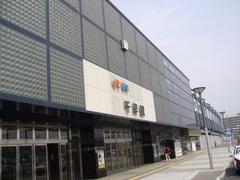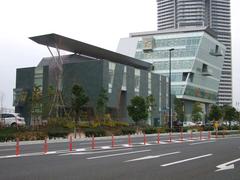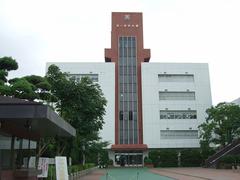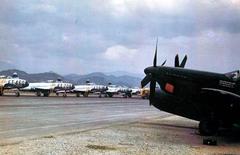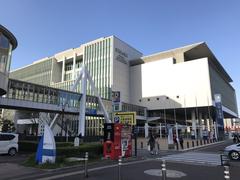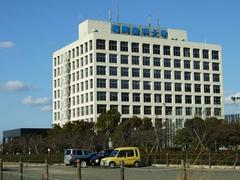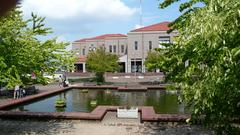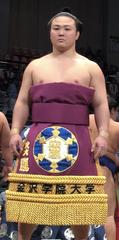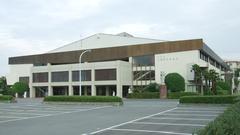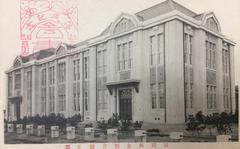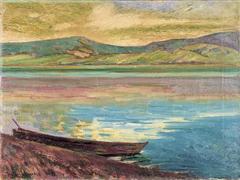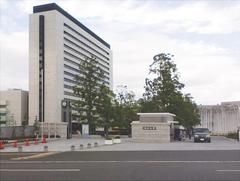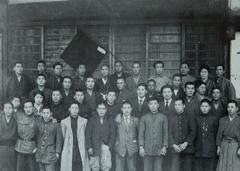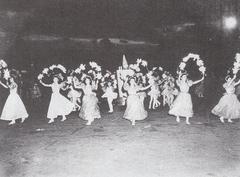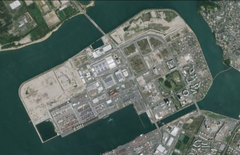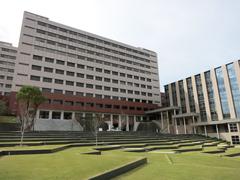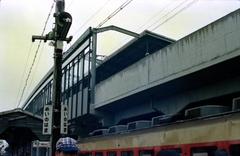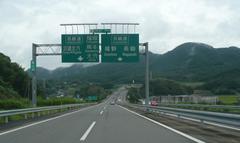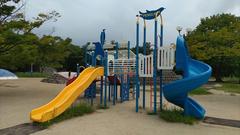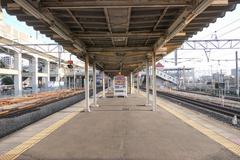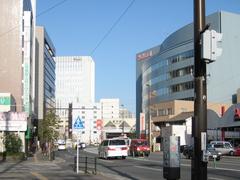Yoshizuka Station Visiting Hours, Tickets, and Travel Guide in Fukuoka, Japan
Date: 14/06/2025
Introduction
Yoshizuka Station (吉塚駅), located in Fukuoka’s energetic Hakata Ward, is far more than just a transportation hub. As a gateway to the city’s rich historical legacy and evolving multicultural identity, the station and its surrounding district offer a unique blend of Showa-era nostalgia, vibrant Asian influences, and contemporary community spirit. Thanks to its strategic placement on the JR Kagoshima Main Line—just one stop from the bustling Hakata Station—Yoshizuka Station gives travelers easy access to both local culture and regional destinations. The area’s transformation from a postwar black market to the lively “Little Asia Market” exemplifies Fukuoka’s resilience and openness to diversity, making it a compelling destination for visitors seeking authentic experiences (Japan News; Japan Guide; The Week).
This guide provides all essential information for visitors: from operating hours and ticketing to accessibility, nearby attractions, cultural highlights, and practical travel tips. Immerse yourself in Fukuoka’s dynamic blend of heritage and innovation at Yoshizuka Station.
Table of Contents
- Introduction to Yoshizuka Station and Its Significance
- Historical Development and Cultural Transformation
- Visiting Information
- Integration with Fukuoka’s Heritage
- Community Initiatives and Preservation
- Frequently Asked Questions (FAQ)
- Visual and Media Recommendations
- Related Articles
- Conclusion
Yoshizuka Station: Location and Significance
Yoshizuka Station, on the JR Kagoshima Main Line, is just minutes from Hakata Station and serves as a vital link for travelers exploring both Fukuoka city and the wider Kyushu region. The station’s presence has fostered a vibrant neighborhood, home to the innovative “Little Asia Market” where immigrants from Vietnam, Myanmar, and India, among others, have established restaurants and shops. This district highlights Fukuoka’s long-standing role as a gateway for cultural exchange with the Asian continent (Japan News; Japan Guide).
Historical Development and Cultural Transformation
Postwar Origins and Market Evolution
After World War II, Yoshizuka’s surrounding area rose to prominence as a bustling black market—a vital resource during times of scarcity. By the 1960s, the shopping arcade boasted over 150 stores and became a pillar of local commerce. However, as the decades passed, changes in consumer behavior and competition from large retailers led to a sharp decline in business, with only a fraction of the shops remaining in the early 2000s (Japan News).
Little Asia Market: Multicultural Revitalization
In response to this decline, local leaders and business owners launched a revitalization project centered on multiculturalism. The resulting “Little Asia Market” features eateries and businesses run by immigrants, offering cuisines such as Vietnamese pho and Indian-Nepalese momos. Distinctive cultural symbols—like the 2-meter-tall Myanmar Buddha statue—underscore the area’s new identity as a haven for diversity and cross-cultural exchange. These efforts have been supported by government subsidies that enhanced infrastructure, including a new market roof and modernized restrooms.
Community and Heritage
Despite its transformation, Yoshizuka retains its Showa-era charm with retro architecture and a nostalgic atmosphere. Community events and seasonal festivals, such as spring and autumn parades, reinforce heritage preservation and celebrate the area’s multicultural vibrancy (The Week).
Visiting Information
Operating Hours and Accessibility
- Yoshizuka Station: Open daily, typically from 5:00 AM to midnight, in accordance with JR Kyushu train schedules.
- Little Asia Market and Shopping Arcade: Most shops open from 10:00 AM to 7:00 PM; some restaurants may stay open later, especially on weekends or during festivals.
- Accessibility: Wheelchair-accessible restrooms and covered arcades ensure comfort for all visitors.
Ticketing and Passes
- Tickets: Purchase single-ride tickets, IC cards (e.g., SUGOCA), or the Fukuoka Tourist City Pass at ticket machines or the staffed Midori no Madoguchi counter.
- Fares: For example, a trip to Hakata Station costs approximately 150 yen.
- Market Entry: No entrance fees for the market or shopping streets.
Guided Tours and Events
- Walking Tours: Available seasonally via local tourism offices, focusing on the area’s multicultural history and culinary offerings.
- Festivals: Annual multicultural festivals and parades are held in spring and autumn, with cultural performances and food stalls.
Photo Opportunities
- Capture the vibrant lanterns and flags of Little Asia Market.
- Photograph the Myanmar Buddha statue, a unique cultural landmark.
- Enjoy retro Showa-era architecture along the shopping street.
Practical Tips
- Getting There: Yoshizuka Station is a 5-minute walk from the main shopping street and easily accessible from Hakata Station (Wanderlog).
- Best Times to Visit: Lunchtime for diverse Asian dishes; weekends or festivals for cultural immersion.
- Etiquette: Respect shopkeepers and ask about their heritage or cuisine.
- Nearby Attractions: Kushida Shrine, Fukuoka Castle, Hakata Old Town (Japan Guide).
Integration with Fukuoka’s Heritage
Yoshizuka’s journey mirrors Fukuoka’s 2,000-year history as a port city and multicultural crossroads. The district’s evolution is celebrated during city-wide heritage events, such as Fukuoka Heritage Week (Fukuoka Heritage Week), and contributes to Fukuoka’s reputation as a livable, innovative metropolis.
Community Initiatives and Preservation
Despite ongoing challenges—such as an aging shop owner population and economic pressures—community-led events and revitalization projects keep Yoshizuka vibrant. Multicultural festivals, costume parades, and government-supported infrastructure upgrades help ensure the district remains welcoming and sustainable (Japan News).
Frequently Asked Questions (FAQ)
Q1: What are the visiting hours for Yoshizuka Station and the Little Asia Market?
A1: Yoshizuka Station operates from around 5:00 AM to midnight. The market is generally open from 10:00 AM to 7:00 PM.
Q2: Are there entrance fees or ticket costs to visit the market?
A2: No entrance fees for the market; train ticket costs depend on the destination.
Q3: Is the area wheelchair accessible?
A3: Yes, with accessible restrooms, covered walkways, and barrier-free facilities.
Q4: When are the best times for festivals or events?
A4: Spring and autumn are peak festival seasons; check local tourism information for exact dates.
Q5: Are guided tours available?
A5: Yes, seasonal tours can be arranged through local tourism offices.
Visual and Media Recommendations
Enhance your visit with high-quality images and virtual tours:
- “Yoshizuka Station entrance with JR Kagoshima Main Line signage”
- “Colorful lanterns and flags at Little Asia Market”
- “Myanmar Buddha statue at Yoshizuka multicultural market”
- “Showa-era shopping street architecture”
- “Map showing Yoshizuka Station’s location relative to Hakata Station”
Related Articles
- [Guide to Hakata Station and Surrounding Areas]
- [Top Historical Sites in Fukuoka]
- [A Food Lover’s Tour of Fukuoka’s Markets]
Conclusion
Yoshizuka Station is a testament to Fukuoka’s ability to blend historical depth with modern multicultural vibrancy. Once a symbol of postwar resilience, it now stands as a lively, inclusive community hub. Whether you are a history enthusiast, cultural explorer, or foodie, Yoshizuka offers a unique window into Fukuoka’s living heritage.
Plan your visit today! Download the Audiala app for personalized travel guides, real-time event updates, and exclusive offers. Follow us on social media for the latest news, and browse our related articles to build the perfect Fukuoka itinerary.
References
- Japan News - Exploring Yoshizuka Station: Visiting Hours, Tickets, and Fukuoka’s Multicultural Market
- The Week - Yoshizuka Station Overview and Cultural Significance
- Japan Guide - Fukuoka City Travel Guide
- Wanderlog - Yoshizuka Station Information
- Fukuoka Heritage Week
